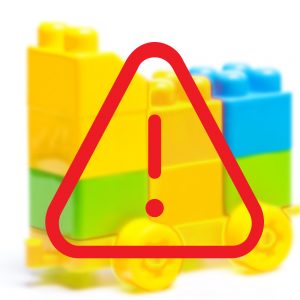
Play is the work of the child. Kids love toys! Good toys provide enjoyment and happiness and perform important roles in childhood development. Unfortunately, some toys may be inherently hazardous and may pose a threat to child safety. The reality is that defective and dangerous toys cause an alarming number of injuries every year.
The most common causes of defects in toy products
A defective toy, by definition, is a product unreasonably dangerous when used as directed for its intended purpose. The majority of product liability claims arise from out of these three types of defects:
- Design defects. An important cause of child injuries caused by defective toys is the poor design of the toys. A defect in the design of a toy can lead to a lower quality item that could harm a child or pose a risk of choking, cutting or burning. Compared with manufacturing defects, design defects are intentional. Issues of this nature are present in the product before it is manufactured.
- Manufacturing defects. All toy manufacturers must review all sections of Federal Hazardous Substances, under the U.S. Consumer Product Safety Commission, to ensure that their products are in conformity with all applicable regulations. However, some manufacturers show a lack of awareness on the dangers to which children might be exposed, as products that are ineffectively built or poorly constructed have resulted in serious injuries and fatalities to children.
- Deficient warnings. Marketing defects result from deficiencies in the way the product is packaged and sold, such as missing or inappropriate labeling or defective safety warnings. Cautionary labeling is key for the safety of children. The labels must contain visible, understandable and indelible information for proper usage or safety information warning of any potential risks.
Toy injury: considerations and facts
Tricycles, riding toys, inflatable toys, laser pointers, toys contaminated with a toxic chemical, toys with cords, strings or batteries and electrical toys are all toys well-known as dangerous for kids. Types of injuries caused by these products may include minor cuts, burns, eye injuries, suffocation, asphyxiation, fractures, poisoning, coma or even death. According to the Center for Injury Research and Policy, every three minutes a child in the U.S. suffers a toy-related injury.
The following statistics for 2016 are the latest available from the U.S. Consumer Product Safety Commission:
- Seven deaths associated with toys
- 240,000 estimated injuries
- The main body part injured was the head or the face – 45%
- More than 251,000 toy-related injuries treated in Emergency Departments
- 34% of all toy-related injuries happened to children under five years old.
Precautionary measures to prevent injuries and keep your kids safe
Accidents do happen, no doubt about it, but in many cases, injuries are preventable and parents need to pay attention and stay vigilant. Below are recommended tips to prevent toy-related injuries:
- Read all warnings and instructions labels
- Make sure the toy has an American Society for Testing and Materials label, which indicates that the product complies with safety standards
- Choose toys appropriate with the child’s age and ability
- Always supervise children and teach them how to use the toys safely
- Avoid using toys with sharp edges, especially for children under eight years of age
- Do not give toys with small parts to young children
- Inspect and check toys periodically for breakage
- Do not allow kids to play with damaged toys
- Store toys in a safe place
- Bicycles, scooters, and skateboards should never be used without helmets and safety gear such as hand, wrist and shin guards
Who is at fault for a defective toy injury?
The manufacturer or the designer of the toy should be held liable when their product injures a child. Toy distributors can also be held accountable if they were aware of any defects in the toys and sold the products anyway. As stated in the Section 102(2) of the Uniform Product Liability Act, product liability includes “all claims or actions brought for personal injury, death, or property damage caused by the manufacture, design, formula, preparation, assembly, installation, testing, warnings, instructions, marketing, packaging, or labeling of any product.” Defective toys can create product liability cases.
Filing a product liability claim for a defective toy injury
If, unfortunately, your child was injured by a dangerous toy, a product liability attorney experienced in proving defective toys claims against manufacturing companies can offer legal support. To ensure you build a strong case and are professionally advised, you should obtain your child’s medical records and keep the defective toy properly stored, for it might be considered valuable evidence. Bringing a defective toy claim can protect your child’s legal rights and you can obtain appropriate compensations for medical bills, future medical bills and pain, and suffering.
